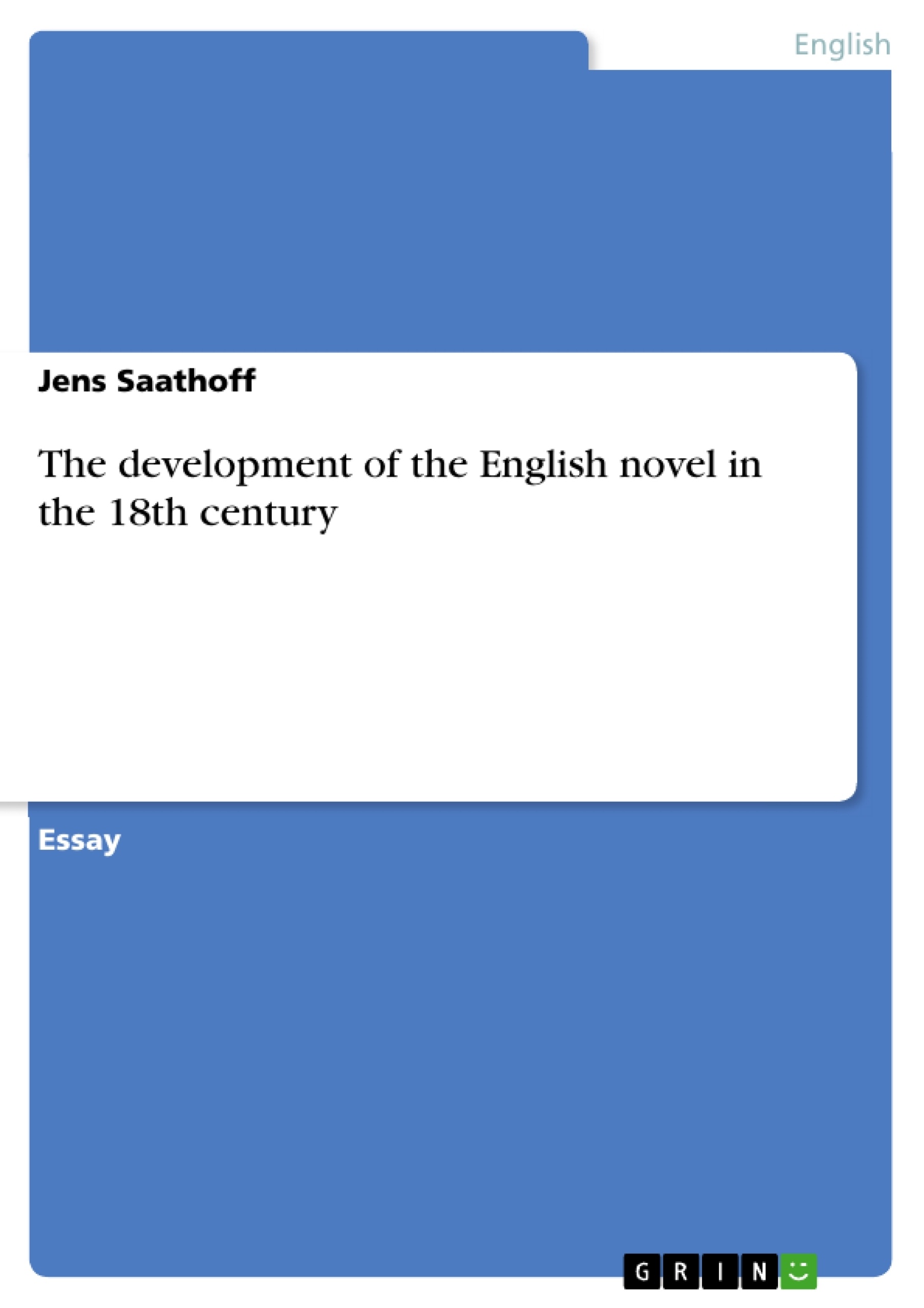What do Pamela, Tristram, Tom, Robinson, Roxana and the Monk have in common?
They are all the main characters of works that belong to the same literary genre and were written in the 18th century. The variety of works is characteristic of the novel, which may be one reason for the attractiveness of this literary form. Novels can be comic, satirical, tragic or romantic; there are epistolary, psychological and Gothic novels. All this seems to be a good reason to deal with this literary genre.
Table of Contents
- Introduction
- How can the novel be distinguished from other literary forms?
- The predecessors of the novel
- The English novel from Defoe to Lewis
- Conclusion
Objectives and Key Themes
This text aims to explore the development of the English novel in the 18th century. It analyzes the characteristics that distinguish the novel from other literary forms, examines its predecessors, and traces its evolution through the works of key authors like Defoe, Richardson, and Fielding.
- Defining the novel as a literary genre
- Tracing the influences of earlier literary forms on the novel
- Examining the impact of key authors on the development of the novel
- Analyzing the evolution of different novelistic styles and techniques
- Exploring the socio-cultural context of the English novel in the 18th century
Chapter Summaries
- Introduction: This chapter introduces the concept of the novel as a literary genre, highlighting its diverse forms and its significance as a popular and influential literary form. It also outlines the objectives of the text.
- How can the novel be distinguished from other literary forms?: This chapter delves into the defining characteristics of the novel, distinguishing it from other narrative forms such as short stories and long narratives in verse. It emphasizes the novel's potential for complex plotting, character development, and portrayal of emotions within a specific historical context.
- The predecessors of the novel: This chapter examines the literary forms that influenced the emergence of the novel, including the novella, picaresque narrative, and the "character" and "romance." It highlights the role of these forms in the genesis of the novel.
- The English novel from Defoe to Lewis: This chapter explores the development of the English novel through the works of three key authors: Daniel Defoe, Samuel Richardson, and Henry Fielding. It analyzes their distinct approaches to the novel, highlighting Defoe's realism, Richardson's psychological focus, and Fielding's satirical and burlesque style.
Keywords
The key terms and concepts in this text include: English novel, literary genre, narrative, realism, psychological novel, epistolary novel, satire, burlesque, Defoe, Richardson, Fielding, 18th century.
- Quote paper
- Dr. Jens Saathoff (Author), 1993, The development of the English novel in the 18th century , Munich, GRIN Verlag, https://www.grin.com/document/212126



